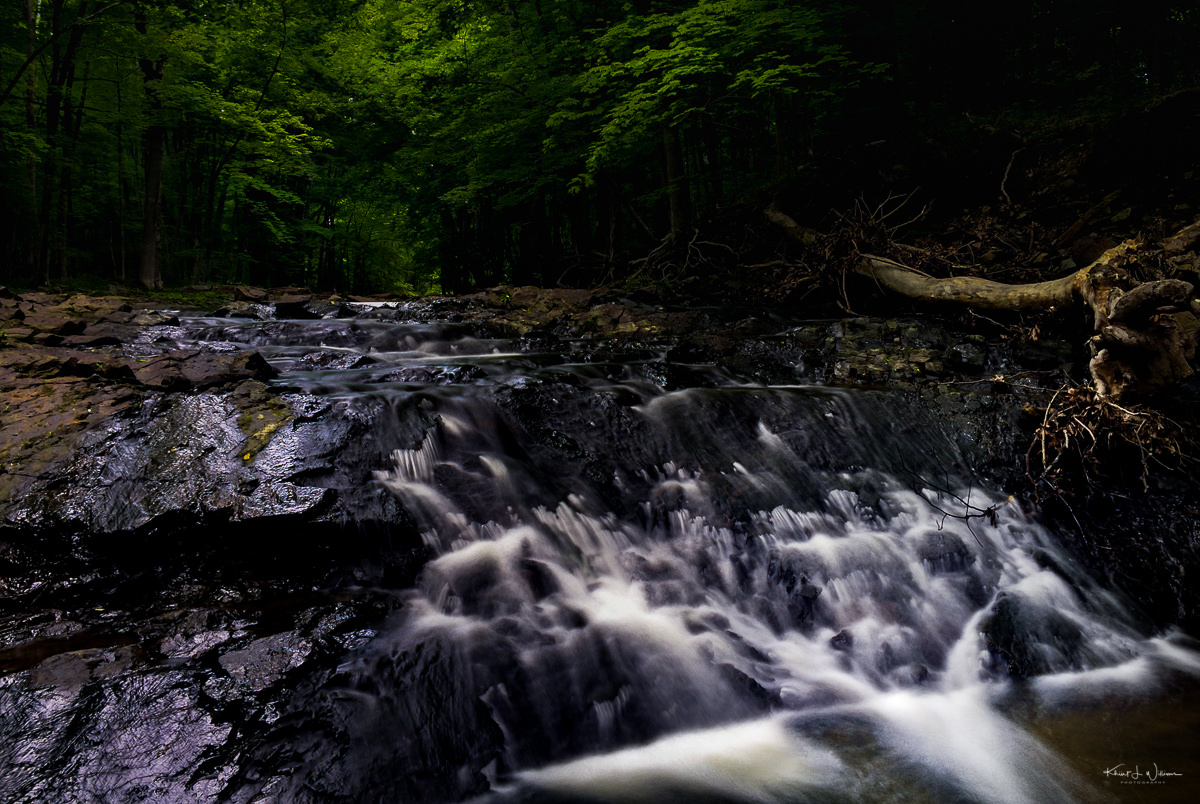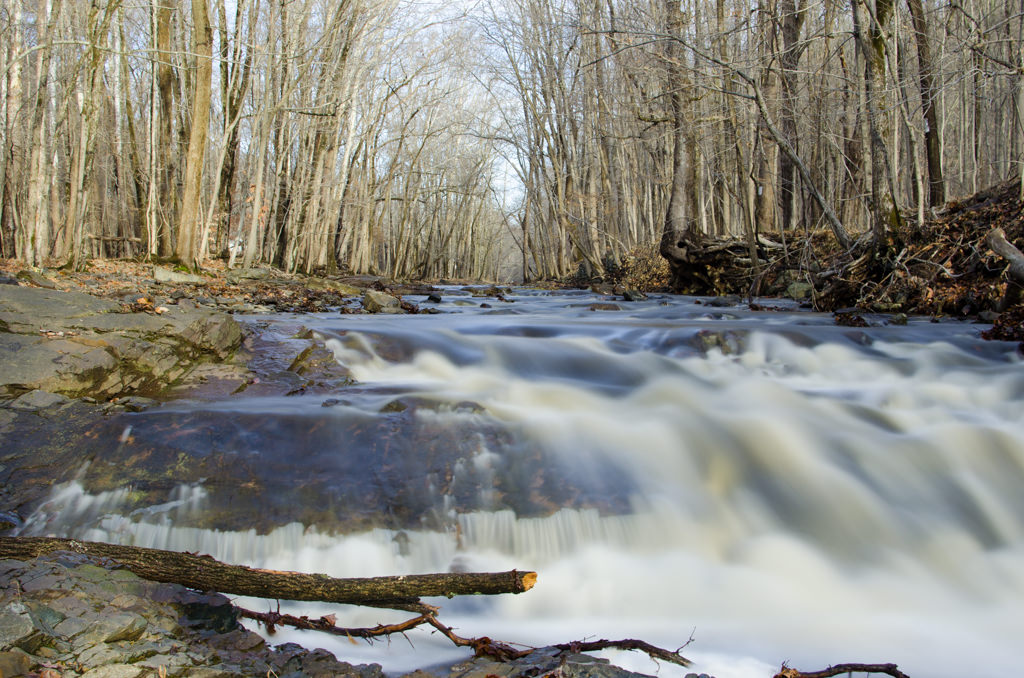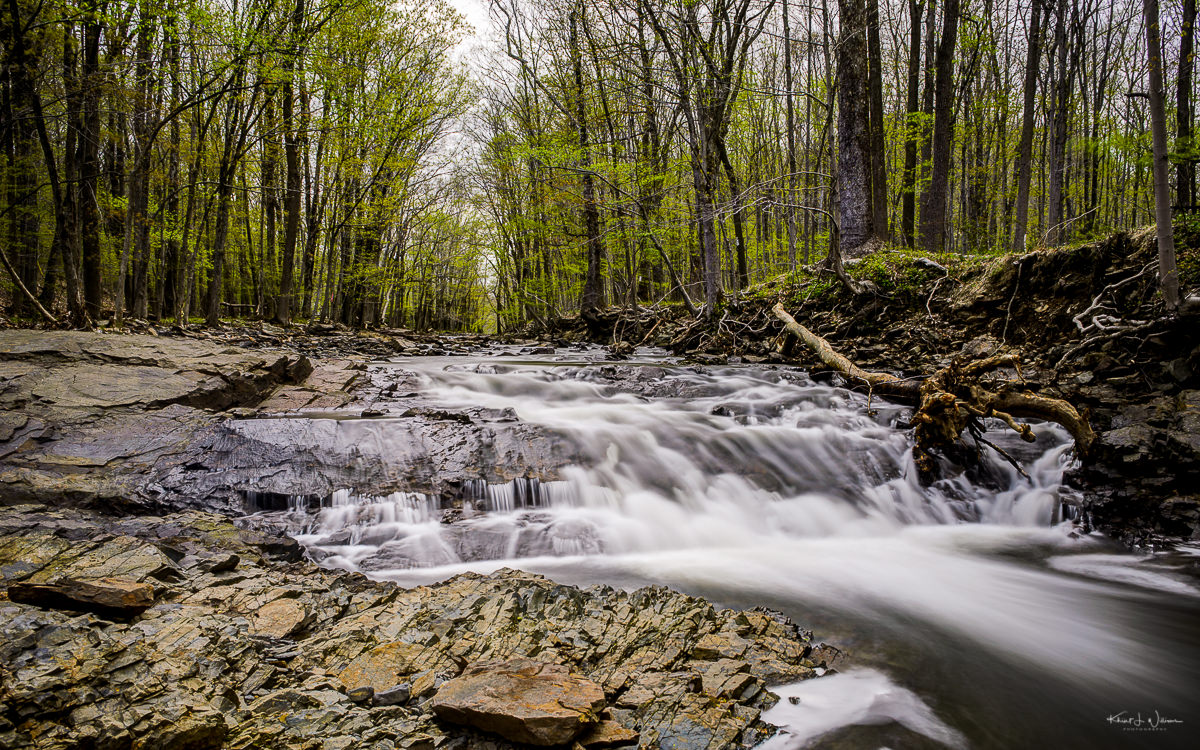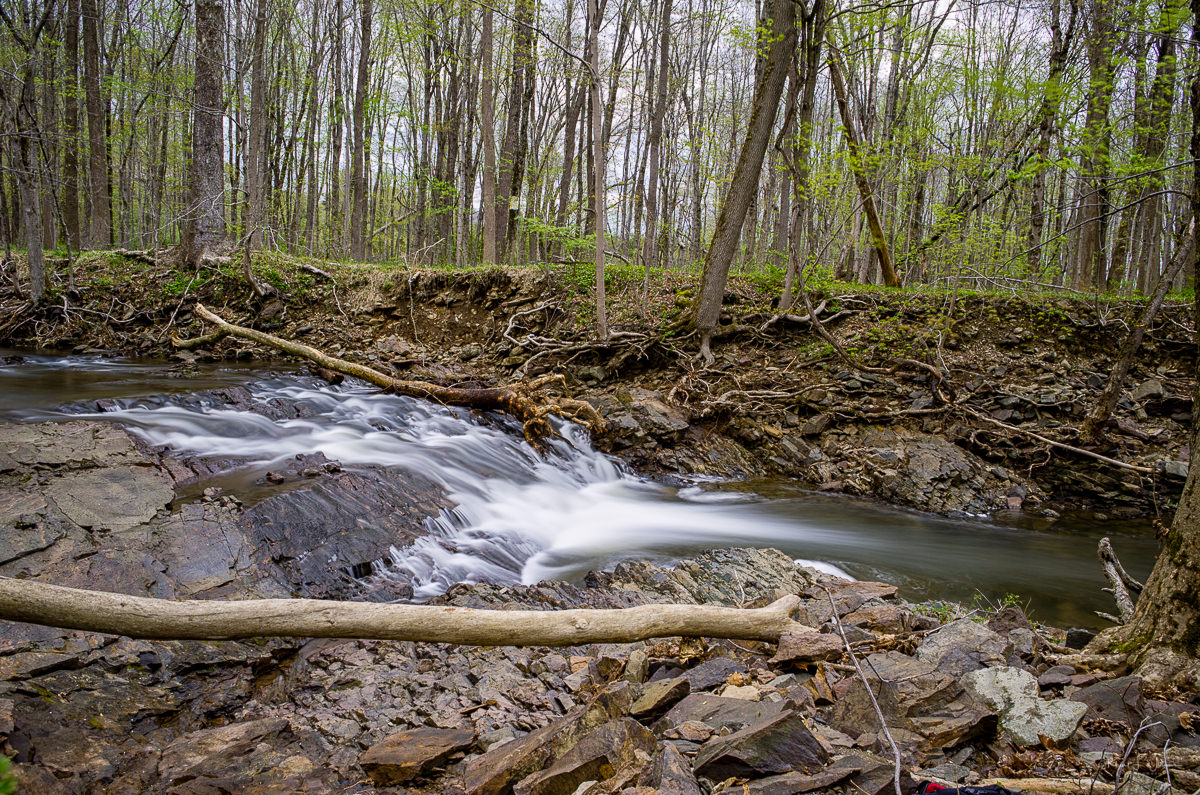I shot these as part of one of my Arcanum Cohort assignments to level up. The Rock Brooks looks very stark in winter compared to spring.
While I wanted to try the technique of using the polarizing filter as shown in Lisa Bethany's video, I don't own a polarizing filter. But I do own a 9 stop Neutral Density (ND) filter which I've used a few times before.
I watched a lot of videos (about 30 minutes) in the Grand Library but few of the techniques were useful given my limitations of time and weather. In the future, I will need to choose my videos more wisely.
It rained most of this week and all day yesterday so the brooks and streams in my town are once again flowing with water. I revisited the Rock Brook along Hollow Road in Skillman, near the foot of the Sourland Mountain Range. A month ago the brook was dry with only a few pools of stagnant water.
I set up my tripod on the very edge of the brook and focused and composed my shot. I set the camera to aperture priority mode and set the lens aperture of the Nikkor 35mm f/1.8 lens to f/8. My Nikon D5100 has an APS-C sized sensor. It's smaller than a 35mm sized sensor which means that the FOV is smaller. The images will appear as though they are cropped. The Nikon APS-C crop factor is 1.5. That means that my 35mm at f/8 has the field of view and aperture of a 52mm (35 x 1.5) lens at f/12 (8 x 1.5).
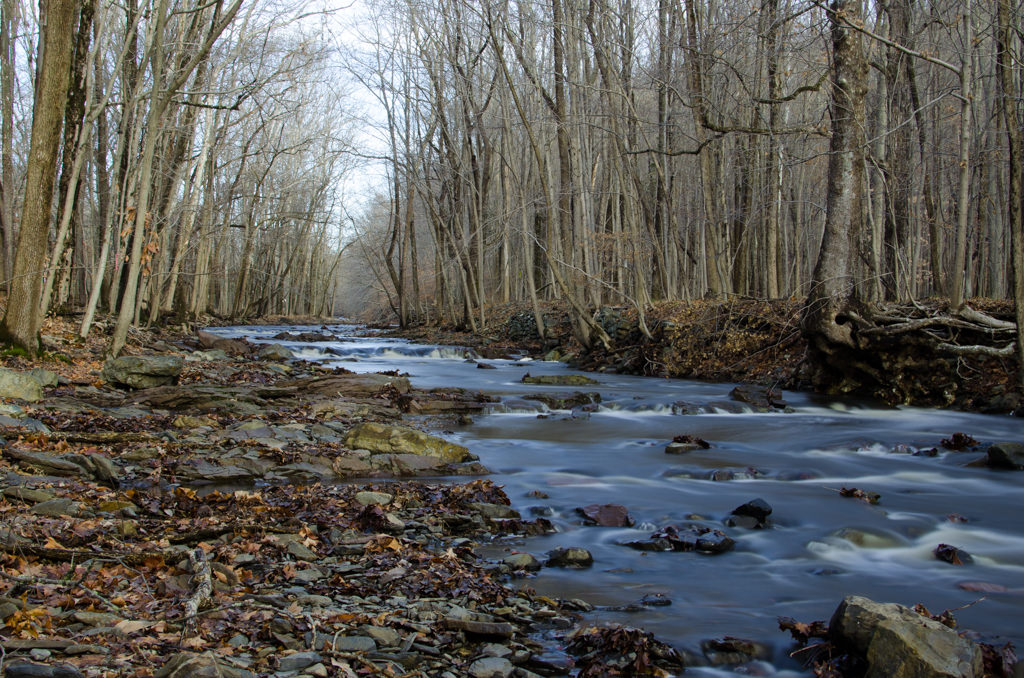
I took note of the shutter speed and entered the values into an application called PhotoPils. PhotoPils helps computes the proper exposure time when using ND filters. Once I had the proper exposure computed I turned off the auto-focus on the lens, set the camera to manual, dial in the correct exposure, set my camera to use the remote-trigger, and fired off a few shots.
Camera shake is the enemy. To help reduce that I made sure to use the Live View feature on my Nikon. It looks up the mirror before exposing the sensor. This helps reduce vibration in the mirror box.
Despite having some decent sunlight it was very cold outside this morning. The air temperature was about 2ºC (~36ºF). I suffered some mild frostbite.
Please comment below.
